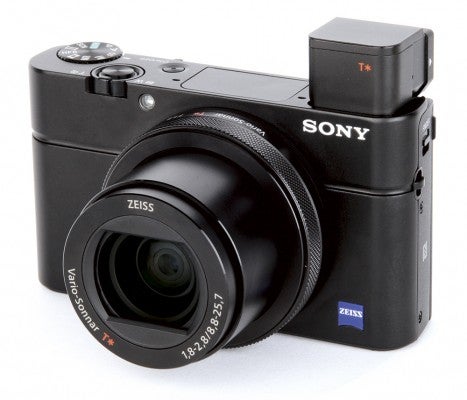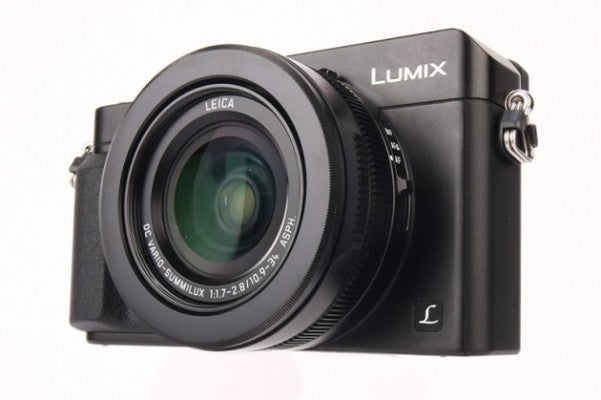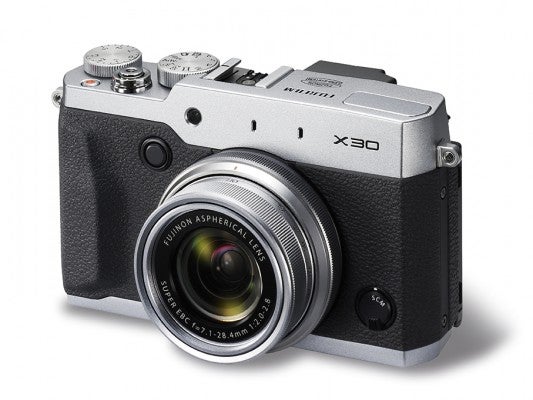Premium compacts tend to have large sensors, fast lenses and built-in EVFs. We take a look at some of the best premium compacts specifically with zoom lenses that are on the market right now
The saying goes that the best camera is the one you have with you. If you invest in a premium compact camera, you’re likely to always have something which is capable of recording great images in your pocket. If you’re after something which can offer more flexibility – and more importantly, better image quality – than your phone, then one of these premium bodies should do the job.
Split into roughly two sectors, some premium compact cameras have zoom lenses, while others have fixed optics. Here we’ll look at zoom cameras. See also our round up of fixed lens premium compacts.
Best premium zoom compacts
Sony RX100 IV
Street Price: £750

Considered by many to be the ultimate balance between pocketability and high image quality, Sony’s RX100 series has long been in favour. The latest iteration (the fourth), features a 20.1 million pixel, 1-inch Exmor RS CMOS sensor which is coupled with a Bionz X processor.
It also has a ISO capabilities ranging from ISO 125 – 12,800 (natively), and a 3-inch, 1.23 million-dot LCD screen. Like the RX100 III it has a 24-70mm (equivalent) zoom range, with maximum apertures ranging from f/1.8-f/2.8.
Also like the Mark III, there’s a collapsible electronic viewfinder in the corner of the camera. This allows you to push the viewfinder back into the body of the camera when not in use, and is handy for keeping the size down.
New features added to the Mark IV version of the camera comes in the shape of 4K video recording, as well as 1000fps slow-motion video recording. The sensor, while remaining at the same 20.1 million pixel resolution as its predecessor, now features a stacked design which allows readout times to be quicker, facilitating super quick 16fps shooting, as well as working with a new electronic shutter to allow fast 1/32,000 sec shutter speeds.
The RX100 IV is ideal for trips away when you don’t want to carry a camera larger than one that can fit in your pocket. It’s got a fast lens and a good degree of customisation, which allows you to use the camera in the exact way that you want to. For something so small, autofocus and image quality is extremely impressive. However, it’s also fair to say that if you’re on a bit of a budget, the RX100 III also delivers superb results – if you don’t need the advanced video functionality and can live without some of the speed benefits the new sensor design brings.
Best for: Portable pocket ability
See best deals for the Sony RX100 IV
Canon G5X
Street Price: £579

Once upon a time, Canon was the undisputed king of the premium compact market. It’s veritable G range took some beating, and it was a while before the likes of Sony, Panasonic et all even came close. Nikon tried, but seems to have retreated from this area of the market altogether of late.
Canon were guilty of doing something similar for a while, pushing out the slightly strange G1X, but it’s now making a great come back with its latest range of G camera.
The G5X sits in the middle of Canon’s premium compact range, and, like Sony’s RX100 IV, features an f/1.8 – f/2.8 maximum aperture range, but this time, the focal length range is 24-100mm (4x optical). It’s the same lens as featured in the older, slightly more pocketable G7X camera.
It has a 20.2 million pixel one-inch type sensor, which is coupled with a Digic 6 processor. A native ISO range of ISO 125 – 12,800 is available.
The major difference between the G5X and the G7X (or G9X) is the presence of an electronic viewfinder, which sits in the middle of the camera’s top-plate. This 2.36 million dot OLED device will be appealing to enthusiasts who prefer to compose with a finder rather than a screen. Speaking of the screen though, unlike Sony, Canon has fully embraced the touch sensitive movement, and its 1,040,000-dot fully articulating screen gives you full touch control over various settings, as well as being useful in playback.
In order to facilitate the inbuilt viewfinder, the G5X has a more bulky exterior than something like the Sony RX100 IV. But this also has the knock on effect of providing more dials and buttons on the body of the camera itself – for those who like the benefits that quick controls like this can provide, it’s a dream to use.
If you’re already a Canon DSLR owner, it’s likely that you’ll find the Canon the most tempting in this list. You’ll already be familiar with Canon’s menu systems, how it operates and so on. If you’re not a Canon DSLR owner it’s never-the-less an appealing prospect for both traditionalists and those who like the newer technologies of touch-sensitivity, built in Wi-Fi and so on.
More importantly, image quality is fantastic. The one-inch sensor is now de rigeur, but this 20.2 million pixel device impresses with good levels of detail, a nice richness in tones and a good performance in low light. If you’re looking for something to take with you on your holiday, the G5X is a good flexible option, which you should get plenty of joy from using.
Best for: Existing Canon users
See best deals for the Canon G5X
Panasonic LX100
Street Price: £499

In many ways, the Panasonic LX100 represents the perfect compromise between portability and high image quality.
It does this by combining a larger (Four Thirds) sensor, with something that you can reasonably expect to fit in a (loose) pocket. The LX100 has the largest sensor available for a zoom premium compact, and for that reason, you can expect high image quality and great low light performance.
The Four Thirds sensor boasts 16.49 million pixels, and it is paired with a lens which offers 24-75mm, pretty much reminiscent of the classic 24-70mm focal length. Further good news is that it offers a f/1.7-f/2.8 maximum aperture throughout its range, which is pretty remarkable and is useful for both low light shooting and creating shallow depth of field effects.
Furthermore, the lens has optical image stabilisation (which works really well), and with an ISO range of ISO 200 -25,600 available, you should have plenty of reason to enjoy using the camera in different lighting scenarios.
More impressive specs come in the shape of 11fps shooting, a burst depth of 24 files (raw and JPEG shooting) and 4K video recording. You can also grab 8 million pixel stills from recorded 4K video, too.
The build quality of the camera is excellent, and while it doesn’t have a touch sensitive screen (slightly odd for Panasonic), the dials and buttons are quick to use. The EVF is nice to use, but, when compared with some of the other models in this group, not as impressive as it could be – there’s good scope for improvement when the inevitable LX100 replacement comes along.
This premium compact has enough features and the image quality is great – it could even replace your main camera, rather than acting as a backup. It’s a great flexible option, and while the price tag is high for a compact camera, for the amount you get, it’s actually quite a good deal – especially when you compare it with some of the other price tags in this group.
Best for: Flexibility in a range of different shooting conditions
See best deals for the Panasonic LX100
Fujifilm X30
Street Price: £299

Fuji X30 for WDC web
Fuji hasn’t updated its premium zoom compact camera in a while, which is good news for your wallet as it’s the cheapest in the group here – at £299 it’s great value for money.
The sensor is a 2/3 inch X trans CMOS II sensor – that’s smaller than one inch, but still bigger than in most other compact cameras – and certainly bigger than your phone’s. Perhaps the biggest thing the X30 has going for it is just how beautiful it is – the retro design along with a number of direct control dials and buttons make it a dream to use.
You’ve got a 4x optical zoom lens which gives you a focal length range from 28mm up to 112mm, along with maximum wide apertures of f/2-f/2.8. So that’s not quite as wide as some of the others in this group, but not foo far off. There’s also a tilting, 3-inch, 920k-dot screen – there’s no touch sensitivity available though. A 2.36-million-dot resolution viewfinder is included, giving you a 100% field of view, along with 0.65x magnification.
Image quality is fantastic, but it struggles to compete with those with a larger sensor in low light – if you’re mainly concerned about taking photos in the daylight, this may concern you less, but it’s something to note if you often find yourself in dim environments.
Best for: Lovers of retro styling
See best deals for the Fujifilm X30




